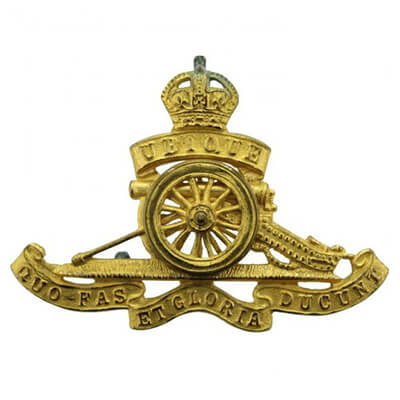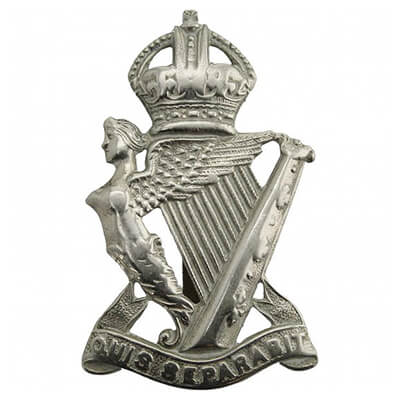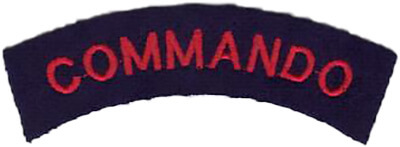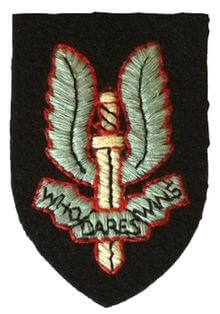| Page Created |
| February 4th, 2023 |
| Last Updated |
| January 15th, 2024 |
| Related Pages |
| British Biographies Special Air Service Biographies Allied Biographies Axis Biographies |
| Robert Blair “Paddy” Mayne |
 |
| Royal Artillery |
 |
| Royal Ulster Rifles |
 |
| Army Commandos |
 |
| Special Air Service |
 |
| Biography |
Robert Blair “Paddy” Mayne was a British Army officer who served in the SAS (Special Air Service) during World War II. He is a legendary figure in the SAS and considered as one of the most successful and innovative special forces commanders of the war.
Paddy Mayne is born on January 28th, 1915, in Newtownards, County Down, Northern Ireland. He is the youngest of seven children and grows up in a military family. His father is a veteran of the Boer War and his brothers also serve in the British Army. Mayne attends the Royal Belfast Academical Institution and later studies law at Trinity College Dublin. He plays rugby for Ireland and is known for his physical strength and athleticism.
In 1938, Mayne joins the Royal Ulster Constabulary (RUC) and is soon commissioned as a second lieutenant in the Royal Artillery. Before the start of World War II in 1939, Mayne joins the Supplementary Reserve and receives a commission in the Royal Artillery. He is posted to the 5th Light Anti-Aircraft Battery, later 8th (Belfast) Heavy Anti-Aircraft Regiment. He was transferred to the 66th Light AA Regiment and then to the Royal Ulster Rifles in 1940. Mayne volunteers for the newly formed No. 11 (Scottish) Commando and sees action in the Syria–Lebanon Campaign in 1941.
Mayne’s is recommended to Captain David Stirling by his friend Lieutenant Eoin McGonigal, an officer of No. 11 (Scottish) Commando and early SAS volunteer. From late 1941 to the end of 1942, Mayne is active in several night raids deep behind enemy lines in the deserts of Egypt and Libya. He makes use of military jeeps for surprise hit-and-run raids on Axis airfields, and it is claimed that he personally destroyed up to one hundred aircraft. His first successful raid at Wadi Tamet in December 1941 results in the destruction of aircraft and petrol dumps, and he is awarded the Distinguished Service Order. He also receives a mention in despatches in February 1942. In the most successful SAS raid of the desert war on July 26th, 1942, Mayne, with Stirling and eighteen armed jeeps, attacks Sidi Haneish Airfield, destroying up to 40 German aircraft with minimal losses.
After Stirling’s capture in January 1943, the 1st Special Air Service Regiment is divided into two parts: the Special Raiding Squadron (SRS) and the Special Boat Section (which later becomes the Special Boat Service). Major Mayne is given the role of commanding the SRS and leads the unit in Sicily and Italy until the end of 1943. During his time in Sicily, Mayne is recognized with a Bar to his DSO award.
In January 1944, Mayne is promoted to the rank of Lieutenant Colonel and assumes the command of the newly reorganized 1st Special Air Service Regiment. Under his leadership, the SAS excells in the final stages of the war, participating in campaigns across France, the Netherlands, Belgium, Germany, and Norway. He also forms close partnerships with local resistance fighters, including the French Maquis, earning him a second Bar to his Distinguished Service Order (DSO) for his fearless leadership and bravery during operations in France.
During the war, Mayne emerges as one of the British Army’s most highly decorated soldiers, earning the DSO with three Bars. In Germany he leads two armored jeep squadrons through the front lines towards Oldenburg. With his brilliant military leadership and courageous actions, he rescues wounded men and takes out a German machine-gun position in a village, thereby paving the way for the 4th Canadian (Armored) Division and disrupting the enemy. A citation for a Victoria Cross is issued by Field Marshal Bernard Montgomery, praising Mayne’s “cool and calculated bravery” and recognising his “single act of bravery” which broke the enemy defenses. Despite this, the recommendation for a Victoria Cross was downgraded to a fourth award of the DSO.
After the war, Mayne retires from the military and returns to Northern Ireland. In 1945, Paddy Mayne is selected to join the Falkland Islands Dependencies Survey as the deputy to the expedition leader, Edward W. Bingham. During this assignment, he visits the Falkland Islands, Deception Island, and Port Lockroy.
After his survey mission, Mayne goes back to Newtownards where he worked as a solicitor and later serves as the Secretary to the Law Society of Northern Ireland. Unfortunately, he suffers from severe back pain which restricted him from participating in activities such as rugby, even as a spectator. Mayne is known to be private about his experiences during the war.
Tragically, Mayne passes away on the night of December 13th, 1955, at the age of forty. After a night of drinking with a masonic friend, he is found dead in his car in Mill Street, Newtownards. It is reported that he had collided with a farmer’s vehicle.
Mayne is remembered by the many mourners who attend his funeral and pay their respects. He is buried in the family plot in the Movilla Abbey graveyard in Newtownards. His masonic jewel is kept by an old schoolfriend for many years before being donated to the Newtownards Borough Council where it is displayed in the Mayoral Chamber. In honor of Mayne’s legacy, a road in Newtownards is named after him, and a statue is dedicated to him outside the town hall in 1997.
Paddy Mayne is remembered as one of the greatest and most innovative special forces commanders of World War II. His bold and daring tactics, his physical strength and athleticism, and his ability to inspire his men made him a legendary figure in the SAS. He was a pioneer of special forces operations and his legacy continues to influence the tactics and techniques used by special forces units around the world today.
